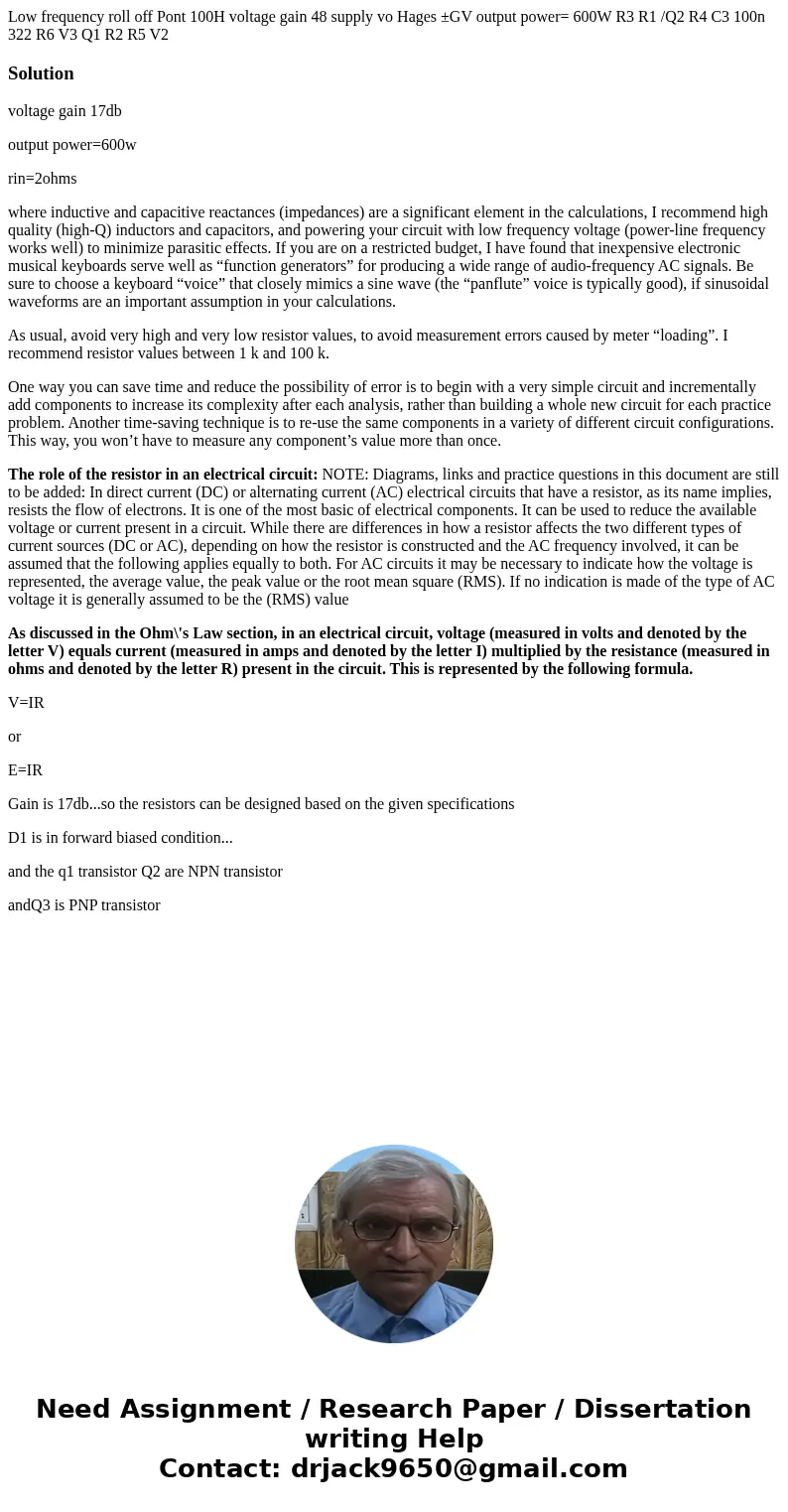Low frequency roll off Pont 100H voltage gain 48 supply vo H
Solution
voltage gain 17db
output power=600w
rin=2ohms
where inductive and capacitive reactances (impedances) are a significant element in the calculations, I recommend high quality (high-Q) inductors and capacitors, and powering your circuit with low frequency voltage (power-line frequency works well) to minimize parasitic effects. If you are on a restricted budget, I have found that inexpensive electronic musical keyboards serve well as “function generators” for producing a wide range of audio-frequency AC signals. Be sure to choose a keyboard “voice” that closely mimics a sine wave (the “panflute” voice is typically good), if sinusoidal waveforms are an important assumption in your calculations.
As usual, avoid very high and very low resistor values, to avoid measurement errors caused by meter “loading”. I recommend resistor values between 1 k and 100 k.
One way you can save time and reduce the possibility of error is to begin with a very simple circuit and incrementally add components to increase its complexity after each analysis, rather than building a whole new circuit for each practice problem. Another time-saving technique is to re-use the same components in a variety of different circuit configurations. This way, you won’t have to measure any component’s value more than once.
The role of the resistor in an electrical circuit: NOTE: Diagrams, links and practice questions in this document are still to be added: In direct current (DC) or alternating current (AC) electrical circuits that have a resistor, as its name implies, resists the flow of electrons. It is one of the most basic of electrical components. It can be used to reduce the available voltage or current present in a circuit. While there are differences in how a resistor affects the two different types of current sources (DC or AC), depending on how the resistor is constructed and the AC frequency involved, it can be assumed that the following applies equally to both. For AC circuits it may be necessary to indicate how the voltage is represented, the average value, the peak value or the root mean square (RMS). If no indication is made of the type of AC voltage it is generally assumed to be the (RMS) value
As discussed in the Ohm\'s Law section, in an electrical circuit, voltage (measured in volts and denoted by the letter V) equals current (measured in amps and denoted by the letter I) multiplied by the resistance (measured in ohms and denoted by the letter R) present in the circuit. This is represented by the following formula.
V=IR
or
E=IR
Gain is 17db...so the resistors can be designed based on the given specifications
D1 is in forward biased condition...
and the q1 transistor Q2 are NPN transistor
andQ3 is PNP transistor

 Homework Sourse
Homework Sourse